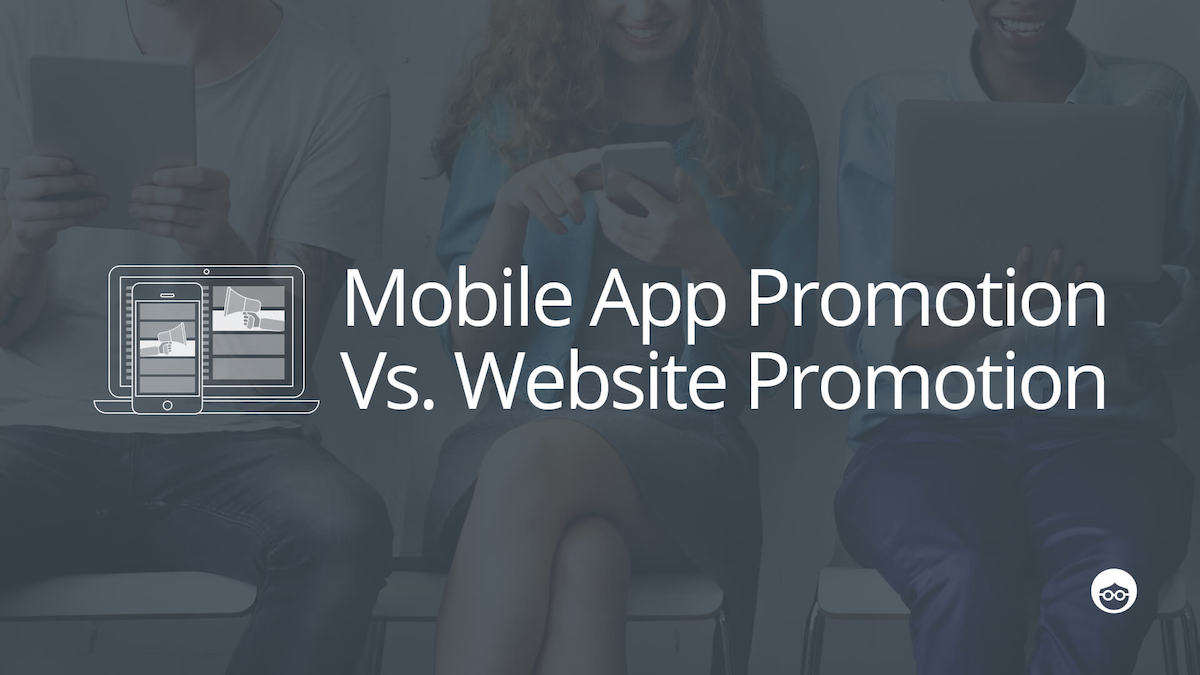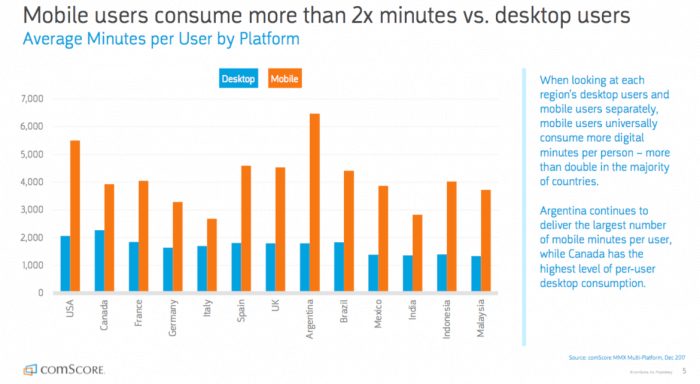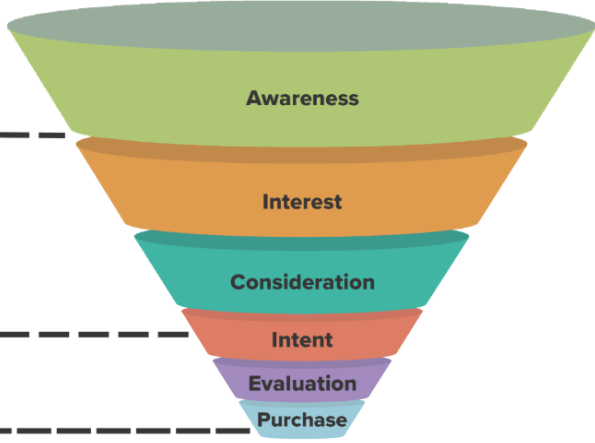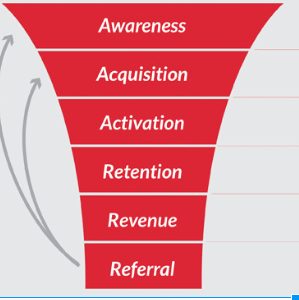
Similar, yet completely different – that’s how to describe the process of marketing your website versus your mobile app marketing.
While the basic skeleton of website and app marketing looks more or less the same, get a bit closer and you’ll see there are significant differences in format, user behavior, customer funnel, strategies, and KPIs. In fact, once you get down to the nitty-gritty, it becomes clear that what is required is a separate, dedicated marketing plan for both.
Promoting your website won’t get your app on the front page of the app store, and marketing your app won’t boost your website’s conversion rate. So let’s drill down and discover just how marketing your website and app is both different and the same, in five key ways:
#5 The format is different
While a website is housed on an outside server, accessible to anyone from anywhere, an app must be downloaded by the user onto their personal device.
The goal of a website is to convince visitors to convert by completing a particular call to action, like purchasing a product or booking an appointment. For mobile apps, the first goal is getting the user to install. But, once the app is downloaded, the challenge becomes driving continued engagement.
Mobile apps have notoriously low retention rates, so app developers must always be thinking of creative ways to generate excitement and keep users returning to the app over and over again. For example, many apps use the badge icon to indicate there are messages, notifications or offers waiting. These prompt the user to open the app and see what they are missing out on.
In a nutshell: Website owners need to worry about increasing their website’s visibility and nurturing visitors throughout their journey on the website. App marketers must focus on first getting users to download the app, and then reducing churn rate by keeping users engaged.
#4 Users behave in different ways
Did you know 80% of mobile activity happens in apps, and the remaining 20% takes place on mobile web? What’s more, pre-purchase research (i.e. browsing flights and prices) tends to be done on mobile web and apps, while the final purchase (booking airline tickets) is more often done on tablet or desktop. These differences in user behavior should have a profound impact on the separate customer journeys of your website and app.

The fact is, users tend to jump between desktop, mobile, and tablet, depending on what they are doing online. Marketers should take an omnichannel approach that allows customers to enjoy a seamless brand experience across all their devices.
Another interesting difference in user behavior is due to the exposure of ratings and reviews in app stores. An app’s rating has a strong influence on a user’s decision to download. Most websites don’t face this kind of upfront scrutiny the way apps do. On the other hand, a great rating can go a long way in driving app installs.
In a nutshell: Marketers of both websites and apps need to consider the cross-device behavior of users when creating their customer journey. It’s important to optimize your website and app UX separately, according to the user behavior and intent for each.
#3 The funnel looks different
Due to the different format and user behavior of websites versus apps, their marketing funnels are also quite different.
As mentioned earlier, an app user must convert (install the app) before they start engaging with it. The acquisition of the app occurs at the early stage of the funnel, whereas for a website, the conversion (whether it be a purchase, demo request, or any other action) is often the last stage.
Of course, every marketing funnel varies depending on a range of factors. However, it’s useful to compare the standard web and app marketing funnels, side-by-side:
Web marketing funnel

App marketing funnel

Both funnels begin with awareness, however, the app funnel moves right into acquisition and retention, while the web funnel takes it more slowly, nurturing the visitor towards the conversion. In other words, the app marketing funnel moves faster and requires a more action-oriented, aggressive approach.
In a nutshell: Evaluate your customers’ ideal journey on your website or app according to the standard funnels for each. What tactics are you using to move your customer from one stage to the next? Look at each channel as entirely separate funnels, and optimize as necessary.
#2 Different strategies are required
One of the key strategies of website promotion is SEO (search engine optimization). Good SEO places your website higher on the results page of search engines, which drives more organic traffic to your site.
The app equivalent for SEO is ASO (app store optimization). With literally millions of apps in the app store, you need to use all the strategies at your disposal to help get your app seen, and ASO is one major way to do it.
Another example of different business strategies for websites versus apps is monetization. When monetizing a website, you can use ads, product purchases, content discovery widgets like Outbrain, sponsorships, and more.
App monetization is quite different. You can monetize your app by charging for the purchase of the install and then deploy a variety of in-app monetization strategies, such as incentive purchases (i.e. purchasing coins for a game, unlocking features for a fee), in-app advertising, and purchases of real-life merchandise.
Something else to consider is geo-marketing. Unlike desktop, mobile users are on the go, and app marketers can use location-based marketing to drive engagement and conversion. Check out this example of how retail favorite, Barneys of New York, does it. By implementing in-store beacons, users of Barney’s mobile app are served notifications based on their proximity to a Barneys’ store. They even receive helpful recommendations for nearby restaurants and events.

Programmatic ad buying is another strategy for websites and apps that can help build audiences at scale. For app advertising, Outbrain partners with AppNexus, which means brands can leverage mobile advertising natively and programmatically using the Outbrain network.
In a nutshell: While there is overlap in website and app marketing, there are times that completely different strategies are called for. Search optimization, monetization, and targeting are three examples where you should use separate approaches when promoting your app and website.
#1 The KPIs are different
The funnels, marketing strategies, and user behavior is different. Is it any wonder that website KPIs are different from app KPIs?
When analyzing your website performance, you need to consider metrics like page views, bounce rate, average time on page, conversion rate, and even page load times. There are many more, and the KPIs you set will depend on what you want to achieve with your site.
App marketing KPIs include install rate, retention rate, churn rate, which measures how many users stop using your app within a certain time frame, DAU and MAU (daily and monthly active users), and others.
Conversion rate is a broad KPI that can be applied to an app as well as a website. Even so, your web and app analytics operate in different spheres and will need to be tackled separately.
This is where tracking tools come in. Due to the inherent differences in the ways they operate, websites and apps require different tracking tools.
Fortunately, there are numerous options available. For website tracking, tools such as Google Analytics, Kissmetrics, Hotjar, and SEMrush are popular.
When it comes to tracking app analytics, you’ll need to choose from an entirely different list, which includes the likes of Google Analytics for Mobile, Appsee, Appsflyer, and Apple Analytics (for iOS only, of course).
In a nutshell: There are no cutting corners – to properly measure the performance of your website and app, you must set separate KPIs for each. If you plan on using a tracking tool, you will need to choose separate products specifically designed for website analysis or app tracking.
Quick Recap:
How is website marketing is different than app marketing?
- Format
- User Behavior
- Funnel
- Overall Strategy
- KPIs
Set two different plans to reach your goals, and you’ll be on your way to success.